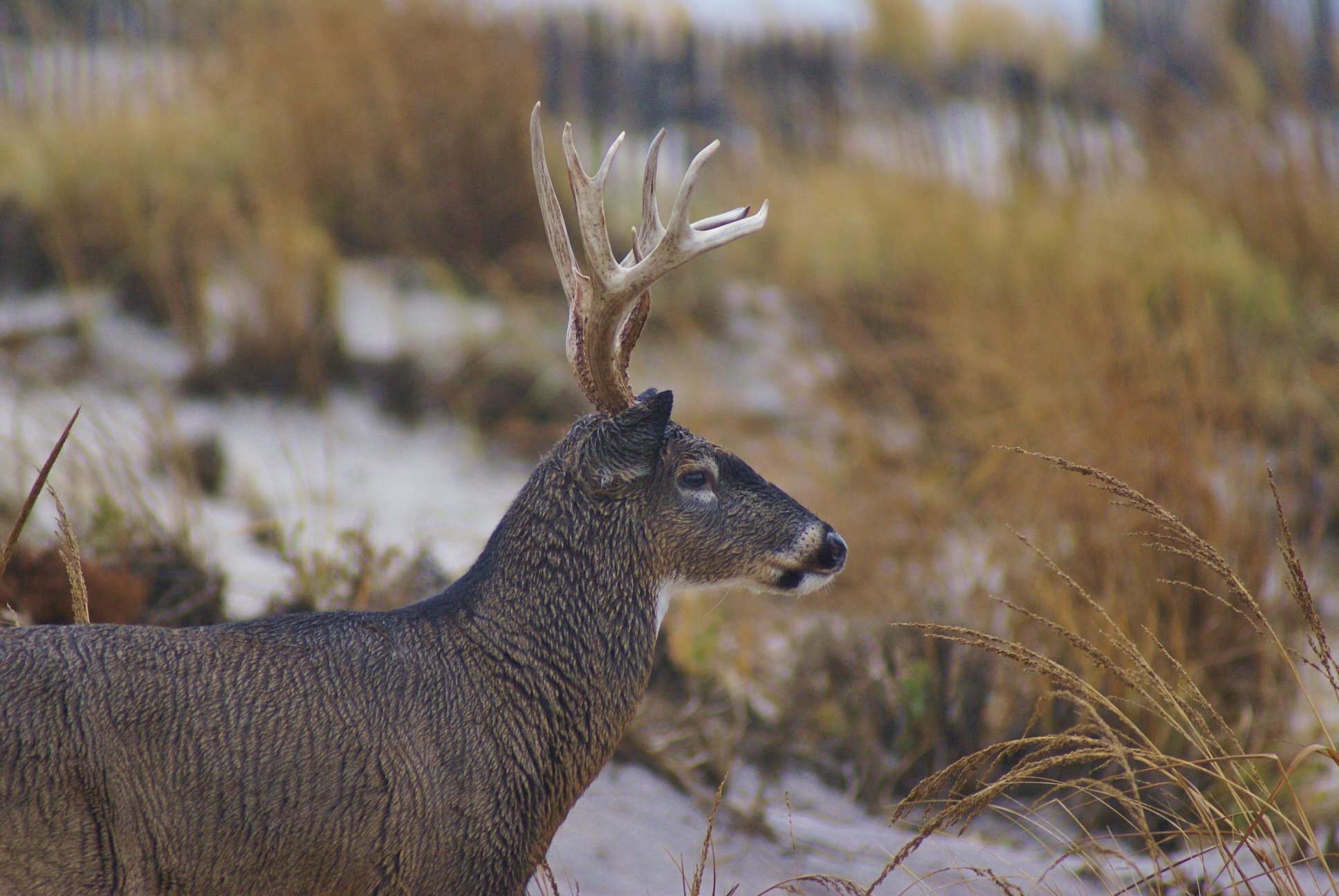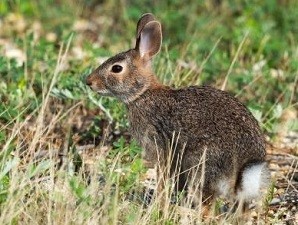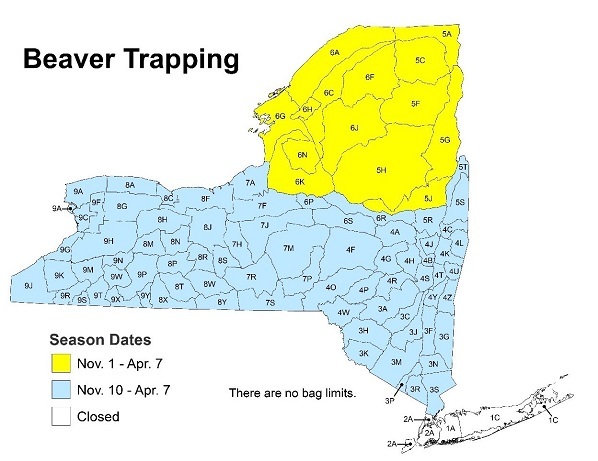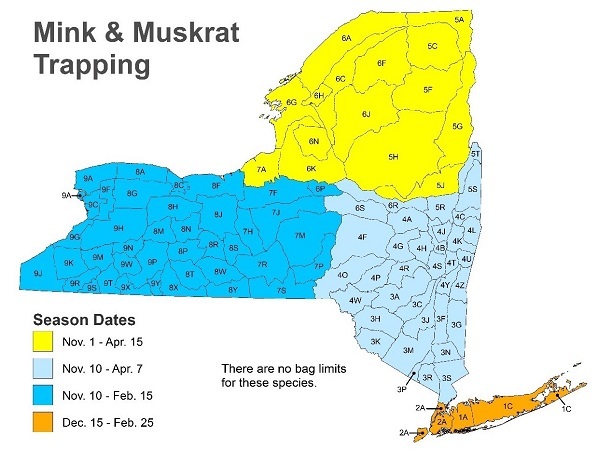Late Season Deer Hunting - Don’t Stop Passing Young Bucks Now
Late bow and muzzleloader season is underway in the Southern Zone. Many hunters relish these late season hunting opportunities when bucks are in their post-rut feeding routine and the likelihood of snow brings the exciting chance to track deer through their haunts. Yet, this is also the time of year that many hunters begin losing their resolve to  pass young, small-antlered bucks, particularly if they haven’t put venison in the freezer yet. Keep in mind, every late season deer hunter has at least one tag for antlerless deer with either-sex, antlerless-only Bow/Muzz tags, and unfilled regular season tags which can also be used for antlerless deer during the late seasons. When you choose to pass up shots on young bucks, there is a great chance those bucks will be available the following year, providing substantially more meat and larger antlers. Choose to take a doe. Your choice makes a difference! pass young, small-antlered bucks, particularly if they haven’t put venison in the freezer yet. Keep in mind, every late season deer hunter has at least one tag for antlerless deer with either-sex, antlerless-only Bow/Muzz tags, and unfilled regular season tags which can also be used for antlerless deer during the late seasons. When you choose to pass up shots on young bucks, there is a great chance those bucks will be available the following year, providing substantially more meat and larger antlers. Choose to take a doe. Your choice makes a difference!
Photo by Katelynd Hill
Help Prevent Rabbit Hemorrhagic Disease from Harming NY’s Rabbits and Hares
 Rabbit Hemorrhagic Disease (RHD) is a fatal virus that affects rabbits and hares. A new strain, RHDV2, was identified in 2010. In 2020, RHDV2 jumped to wild rabbits and hares in the southwestern U.S., where it spread to six states within four months. The virus can infect wild rabbits and hares in addition to domestic rabbits. RHDV2 is extremely hardy, easily transmitted, and highly lethal to rabbits and hares. It does not infect humans or other animals like dogs or cats. RHDV2 spreads easily through direct contact between rabbits or contact with contaminated environments or objects. Rabbit Hemorrhagic Disease (RHD) is a fatal virus that affects rabbits and hares. A new strain, RHDV2, was identified in 2010. In 2020, RHDV2 jumped to wild rabbits and hares in the southwestern U.S., where it spread to six states within four months. The virus can infect wild rabbits and hares in addition to domestic rabbits. RHDV2 is extremely hardy, easily transmitted, and highly lethal to rabbits and hares. It does not infect humans or other animals like dogs or cats. RHDV2 spreads easily through direct contact between rabbits or contact with contaminated environments or objects.
The most likely routes of introduction to New York are through transported domestic rabbits, internationally imported rabbit products, or people who travel to outbreak areas in the Southwest. Below are ways you can help stop the spread:
- If you keep domestic rabbits, prevent intermingling with other rabbits. If you get new rabbits, quarantine them for two weeks and use separate equipment and clothing to care for them.
- If you are a wildlife rehabilitator who cares for wild rabbits, do not keep domestic rabbits as pets or have contact with domestic rabbits; maintain good disinfection techniques and change PPE between rabbit litters or individual rabbits.
- If you are a rabbit or hare hunter, avoid contact with domestic rabbits, and do not bring rabbit carcasses killed in other states to New York.
- If you are a hiker, camper, or traveler, and you have been to known RHDV2 outbreak areas, disinfect footwear with a 10 percent bleach solution (one part household bleach, nine parts water) before going afield in New York.
- Please report any unusual wild rabbit mortalities you encounter to the DEC Wildlife Health Unit at (518) 478-2203.
Read the RHDV2 factsheet (PDF) to learn more about how it spreads, ways to prevent it, and what you can do to help.
Season Date Changes for Beaver, Mink and Muskrat Trapping
On Nov. 25, 2020, DEC adopted new season date regulations for beaver, mink and muskrat trapping in portions of New York. The new season dates will expand trapper opportunity in central and western New York, streamline water trapping dates, and more effectively manage New York’s healthy beaver population. These season date changes were initially proposed from results of a 2017 survey of furbearer trappers and hunters to determine season timing preferences. Trappers and furbearer hunters both indicated a preference for dates that would maximize pelt quality to promote wise, sustainable use of our abundant furbearer resources in New York.
Due to the lengthy rule-making process, these season date changes were not adopted in time to impact trapping season start dates for the 2020-21 season. However, beaver trappers in central and western New York will now be able to set traps through Apr. 7, 2021, and other water trapping season date changes will go into effect beginning in 2021. The full season date changes are outlined below.

Effective immediately, beaver trapping season throughout the entire Southern Zone (with the exception of New York City and Long Island) will now run through Apr. 7. Beginning in 2021, the beaver season will run from Nov. 10 – Apr. 7 throughout the Southern Zone (excluding New York City and Long Island). In the Northern Zone, the beaver trapping season is unchanged and is open from Nov. 1 through Apr. 7.

In central and western New York (WMUs 6P, 7F, 7H, 7J, 7M, 7P, 7R, 7S, 8A, 8C, 8F, 8G, 8H, 8J, 8M, 8N, 8P, 8R, 8S, 8T, 8W, 8X, 8Y, 9A, 9C, 9F, 9G, 9H, 9J, 9K, 9M, 9N, 9P, 9R, 9S, 9T, 9W, 9X, 9Y), the mink and muskrat trapping season will now run from Nov. 10 – Feb. 15 each year. The season in southeastern New York remains unchanged, running from Nov. 10 – Apr. 7. There will be no changes to the Northern Zone mink and muskrat season this year; however, the season will run from Nov. 1 – Apr. 15 starting in 2021.
|


 pass young, small-antlered bucks, particularly if they haven’t put venison in the freezer yet. Keep in mind, every late season deer hunter has at least one tag for antlerless deer with either-sex, antlerless-only Bow/Muzz tags, and unfilled regular season tags which can also be used for antlerless deer during the late seasons. When you choose to pass up shots on young bucks, there is a great chance those bucks will be available the following year, providing substantially more meat and larger antlers. Choose to take a doe. Your choice makes a difference!
pass young, small-antlered bucks, particularly if they haven’t put venison in the freezer yet. Keep in mind, every late season deer hunter has at least one tag for antlerless deer with either-sex, antlerless-only Bow/Muzz tags, and unfilled regular season tags which can also be used for antlerless deer during the late seasons. When you choose to pass up shots on young bucks, there is a great chance those bucks will be available the following year, providing substantially more meat and larger antlers. Choose to take a doe. Your choice makes a difference!  Rabbit Hemorrhagic Disease (RHD) is a fatal virus that affects rabbits and hares. A new strain, RHDV2, was identified in 2010. In 2020, RHDV2 jumped to wild rabbits and hares in the southwestern U.S., where it spread to six states within four months. The virus can infect wild rabbits and hares in addition to domestic rabbits. RHDV2 is extremely hardy, easily transmitted, and highly lethal to rabbits and hares. It does not infect humans or other animals like dogs or cats. RHDV2 spreads easily through direct contact between rabbits or contact with contaminated environments or objects.
Rabbit Hemorrhagic Disease (RHD) is a fatal virus that affects rabbits and hares. A new strain, RHDV2, was identified in 2010. In 2020, RHDV2 jumped to wild rabbits and hares in the southwestern U.S., where it spread to six states within four months. The virus can infect wild rabbits and hares in addition to domestic rabbits. RHDV2 is extremely hardy, easily transmitted, and highly lethal to rabbits and hares. It does not infect humans or other animals like dogs or cats. RHDV2 spreads easily through direct contact between rabbits or contact with contaminated environments or objects.
